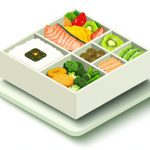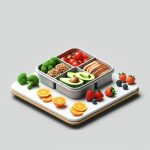Ever wondered if that flaky, white haddock is as good for you as it tastes? Let’s face it, choosing seafood can be confusing. This guide cuts through the jargon and gives you the straight facts about haddock: its nutritional value, health benefits (and potential downsides), and how to cook it for optimal results. We’ll cover everything from sourcing sustainable haddock to preparing delicious and healthy dishes, so you can confidently add this versatile fish to your diet. For more on healthy fish choices, check out this guide on grouper.
Haddock: A Nutritional Deep Dive
Haddock is a delicious, flaky white fish, but is it truly good for you? Let’s explore the nutritional details and determine if this seafood deserves a prominent spot on your plate and how this popular choice impacts your overall well-being.
Haddock’s Nutritional Powerhouse: Protein, Minerals, and Vitamins
Is haddock healthy? The short answer is a resounding yes! This lean fish is packed with nutrients. A typical 3-ounce (85-gram) serving offers approximately 17-20 grams of high-quality protein – essential for building and repairing your body’s tissues. Plus, it’s relatively low in calories, with around 77 per serving, making it an excellent choice if you’re watching your weight or managing your calorie intake.
Beyond protein, haddock is a good source of several important minerals and vitamins. Selenium, for example, acts as a powerful antioxidant, protecting your cells from damage caused by free radicals. Phosphorus is another key player, contributing to strong bones and teeth. You’ll also find a variety of B vitamins, including niacin (B3), B6, and B12, which are crucial for energy production, nerve function, and maintaining a healthy nervous system. Haddock truly presents a nutritional trifecta: protein, essential minerals, and vital vitamins all packed into one tasty package.
Omega-3 Fatty Acids: Heart Health and Haddock’s Role
While haddock may not be as rich in omega-3 fatty acids as some of its oily fish counterparts like salmon, mackerel, or herring, it still provides a valuable contribution (approximately 0.5-1g per 100g serving). These healthy fats are incredibly important for heart health and brain function; they can help reduce inflammation, lower your risk of heart disease, and support cognitive function.
To maximize omega-3 intake from haddock, consider pairing it with other omega-3-rich foods in your meals. Remember that a balanced diet is key. Don’t expect any single food to work miracles. Include a variety of fish and other omega-3 sources in your diet for optimal benefits. Variety is the best approach for ensuring you get all the nutrients you need, including those essential omega-3s.
Cooking Methods: Maximizing Nutrients and Minimizing Unhealthy Additives
The way you prepare your haddock can significantly impact its nutritional profile. Opt for healthier cooking methods like steaming, baking, poaching, grilling, or air frying. These methods help preserve the fish’s natural nutrients and avoid adding excessive amounts of unhealthy fats and calories.
While smoked haddock offers a delicious, smoky flavor, it’s often higher in sodium. If you choose smoked haddock, be mindful of your overall sodium intake for the day. Check the nutrition label and adjust your diet accordingly to maintain a healthy sodium level.
Sustainable Sourcing: A Responsible Choice for a Healthier Planet
Sustainable fishing practices are critical to protecting our oceans, preserving marine ecosystems, and ensuring the long-term availability of seafood for future generations. When choosing haddock, look for certifications like the Marine Stewardship Council (MSC) label. This label confirms that the fish comes from a responsibly managed fishery, helping to minimize environmental impact and support sustainability.
Choosing sustainably sourced haddock isn’t just about your health; it’s about contributing to the responsible management of our planet’s resources and protecting the delicate balance of marine ecosystems.
Potential Drawbacks: Mercury Levels, Allergies, and Moderation
While generally beneficial, there are a few minor points to consider regarding haddock consumption. First, some individuals have fish allergies, so always be mindful of potential allergic reactions. Common symptoms can range from mild skin irritation to more severe reactions, so it’s essential to be aware of your body’s response.
Second, while haddock is a nutritious choice, its omega-3 content is lower than that of some other fatty fish. To ensure adequate omega-3 intake, consider incorporating other omega-3-rich foods into your diet, such as flaxseeds, walnuts, chia seeds, or other fatty fish like salmon or sardines.
Finally, remember that moderation is key. Don’t overdo it with any single food, no matter how healthy it is. A balanced and varied diet is always the best strategy for optimal health and well-being.
Although mercury levels in haddock are typically low, pregnant women, nursing mothers, and young children should still monitor their intake of all seafood. The FDA and EPA provide guidelines on safe seafood consumption for these groups.
How Much Haddock Should You Eat for Optimal Health?
For most adults, aiming for 2-3 servings of haddock per week as part of a balanced eating plan is a reasonable and healthy goal. This allows you to enjoy the nutritional benefits of haddock without overconsumption or potential risks. A serving size of 3-4 ounces (85-115 grams) is generally recommended.
Always remember to listen to your body and adjust your portions as needed based on your individual dietary needs and preferences. Consulting a registered dietitian or healthcare professional can provide personalized guidance.
Practical Tips for Enjoying Haddock Healthily
Here’s how to make the most of haddock in your diet:
- Choose Wisely: Prioritize sustainably sourced haddock. Look for the MSC label or ask your fishmonger about the source of the fish.
- Cook Smartly: Explore healthy cooking methods like steaming, baking, poaching, grilling, or air frying. Avoid deep-frying to minimize added fats and calories.
- Season Sensibly: Use herbs, spices, lemon juice, or vinegar to add flavor without relying on excessive salt or high-fat sauces.
- Pair Thoughtfully: Serve haddock with a variety of vegetables, whole grains, and healthy fats to create a balanced and nutritious meal.
- Portion Control: Stick to recommended serving sizes to maintain a balanced diet and manage your calorie intake.
- Seafood Variety: Include other types of fish and seafood in your diet to ensure a diverse range of nutrients and omega-3 fatty acids.
The Verdict: Is Haddock Good for You?
The answer to “Is haddock healthy to eat?” is a resounding yes, but with a few sensible considerations. Haddock is a tasty and versatile fish that offers numerous important nutrients and health benefits, making it a valuable addition to a well-rounded and healthy diet.
When you select sustainably sourced haddock and prepare it using healthy cooking methods, you unlock its full nutritional potential. It’s not a miracle food, but a delicious and nutritious part of a balanced eating plan that supports overall health and well-being. Enjoy!
- Bento Box Glass Offers Practical, Eco-Friendly Meal Storage - December 16, 2025
- The Best Bento Box Price For Your Perfect Packed Lunch - December 15, 2025
- Bento Box Shopping Tips for Smart and Stylish Lunch Prep - December 14, 2025










